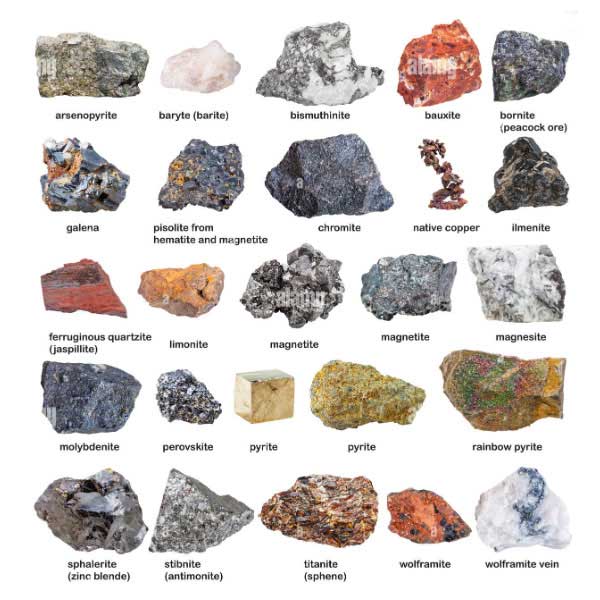
A mineral is a natural substance with distinctive chemical and physical properties, composition, and atomic structure. The definition of an economic mineral is broader, and includes minerals, metals, rocks and hydrocarbons (solid and liquid) that are extracted from the earth by mining, quarrying and pumping.
Mineral resources are important national assets. Their extraction and use makes an essential contribution to the economy. Adequate supplies are necessary for the development of a modern economy and are required for manufacturing, construction, power generation, transportation and agriculture. Renewable energy sources, recycled materials and industrial by–products can meet part of these requirements but new mineral sources will continue to be required. The Govt. planning process for mineral developments addresses national, regional and local issues, and encourages public involvement throughout. It has an important role to play in contributing to the Government’s strategy for promoting sustainable development of mineral resources.
Energy minerals used to produce electricity, fuel for transportation, heating for homes and offices and in the manufacture of plastics. Energy minerals include coal, oil, natural gas and uranium.Metals such as iron (as steel) is used in cars or for frames of buildings, copper is used in electrical wiring, lithium in rechargeable batteries, and aluminium in aircraft and to make drink cans. Precious metals are used in jewellery and mobile phones.
Construction Minerals Including Sand And Gravel, Brick Clay And Crushed Rock Aggregates Used To Manufacture Concrete, Bricks And Pipes And In Building Houses And Roads.
Industrial Minerals, Otherwise Known As Non–Metallic Minerals, Used In A Range Of Industrial Applications Including The Manufacture Of Chemicals, Glass, Fertilisers And Fillers In Pharmaceuticals, Plastics And Paper. Industrial Minerals Include Salt, Clays, Graphite, Limestone, Silica Sand, Phosphate Rock, Talc And Mica.
Examples of Ore Minerals
1. Acanthite (cooled polymorph of Argentite): Ag2S for production of silver
2. Barite: BaSO4
3. Bauxite Al(OH)3 and AlOOH, dried to Al2O3 for production of aluminium
4. Beryl: Be3Al2(SiO3)6
5. Bornite: Cu5FeS4
6. Cassiterite: SnO2
7. Chalcocite: Cu2S for production of copper
8. Chalcopyrite: CuFeS2
9. Chromite: (Fe, Mg)Cr2O4 for production of chromium
10. Cinnabar: HgS for production of mercury
11. Cobaltite: (Co, Fe)AsS
12. Columbite-Tantalite or Coltan: (Fe, Mn)(Nb, Ta)2O6
13. Dolomite: CaMg(CO3)2
14. Galena: PbS
15. Native gold: Au, typically associated with quartz or as placer deposits
16. Magnetite: Fe3O4
17. Malachite: Cu2CO3(OH)2
18. Molybdenite: MoS2
19. Pentlandite: (Fe, Ni)9S8
20. Pyrolusite: MnO2
21. Scheelite: CaWO4
22. Sperrylite: PtAs2 for production of platinum
23. Sphalerite: ZnS
24. Uraninite (pitchblende): UO2 for production of metallic uranium
25. Wolframite: (Fe, Mn)WO4
